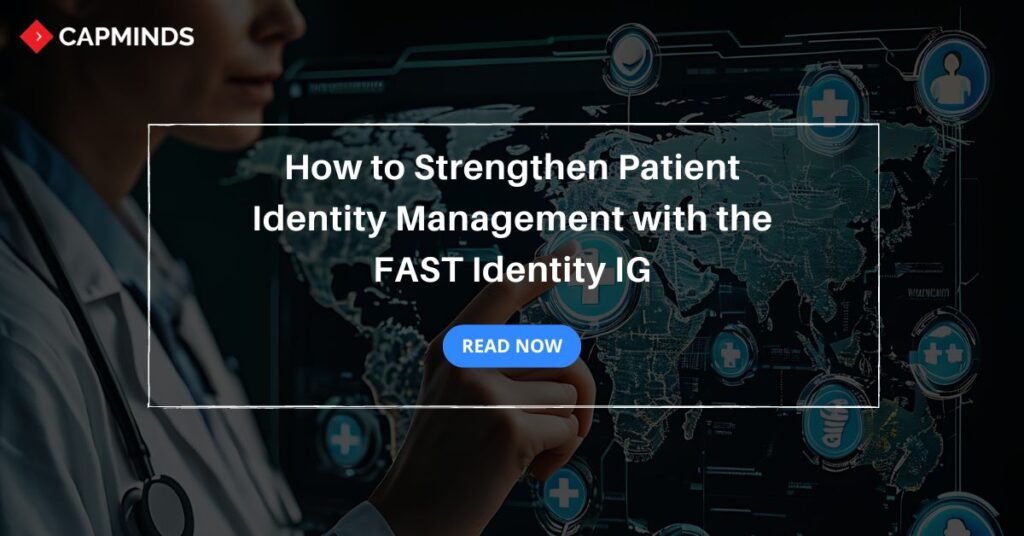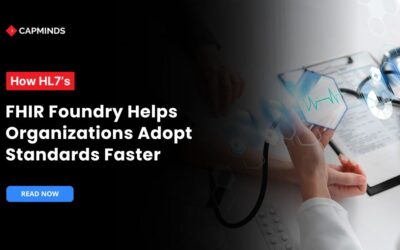How to Strengthen Patient Identity Management with the FAST Identity IG
Accurate patient identity management is important for more secure healthcare. The FAST Identity IG is a set of guidelines that are developed to address this need by providing a structured framework. Ultimately aiming for enhancing patient matching and identity management.
In this blog post, you’ll learn the overview of FAST Identity IG, Key components that enhanced patient matching solutions, enhancement in patient identity management, how to utilize historical data for improving patient matching, and more.
Overview of the FAST Identity IG
The FAST Identity Implementation Guide addresses the critical need for accurate patient identity management across healthcare systems. Developed by the FHIR at Scale Taskforce (FAST), this guide enhances the FHIR patient match operation which makes it easier for cross-organizational workflow.
It serves as a comprehensive framework of best practices for healthcare transactions that require effective identity matching and management. This ensures the reliability and standardization necessary for improved patient care and interoperability among healthcare providers.
Key Components Enhancing Patient Matching Solutions
The FAST Identity IG introduces essential components to improve patient identity management. A significant enhancement is the establishment of the HL7 Digital Identifier, which reduces matching errors by prioritizing digital identifiers over demographic data. This digital identifier, associated uniquely with individuals, enhances confidence in identity resolution.
The guide also outlines how these identifiers can be integrated into health records, further refining matching processes. These advancements streamline patient matching while fortifying the security and integrity of digital identities in healthcare.
Learn More about our HL7 FHIR Solution
1. Development of Patient Resource Profiles
To enhance patient-matching workflows, the FAST Identity IG develops three distinct Patient Resource profiles, each tailored to specific healthcare settings. These profiles incorporate varying levels of demographic information that must be verified before use in matching processes. This structured approach ensures that patient data is reliable and actionable.
Additionally, an output score is generated to communicate the strength of each match clearly. By standardizing these procedures, the guide significantly improves the reliability of patient matching.
2. Introduction of the HL7 Digital Identifier
A cornerstone of the FAST Identity IG is the introduction of the HL7 Digital Identifier, a new standard aimed at improving patient matching accuracy. This identifier focuses on unique digital identifiers rather than traditional demographic information, significantly reducing matching errors.
The HL7 Digital Identifier is uniquely tied to an individual and originates from a strong identity verification process. This innovation enhances confidence in matching outcomes, which is crucial for achieving reliable patient identity management in diverse healthcare environments.
Related: The Use of HL7 FHIR in OpenEMR: An Exclusive Comprehensive Guide
4 Ways to Enhance Patient Identity Management Using the FAST Identity IG
The FAST Identity IG introduces various enhancements to establish a robust framework for patient identity management. It outlines identity assurance levels suitable for individual and organizational credentials, fostering security and trust within healthcare transactions.
The guide’s emphasis on digital identifiers strengthens patient matching processes while reducing reliance on less reliable demographic data.
Additionally, it aims to refine identity management strategies and improve interoperability, enabling seamless data sharing among healthcare providers and ensuring that patients receive appropriate care.
1. Levels of Identity Assurance
Identity assurance levels outlined in the FAST Identity IG provide a structured approach to verifying individual and organizational credentials. These levels are designed to ensure that patient identities are accurately authenticated, which is critical for reliable healthcare transactions.
By defining appropriate assurance levels, the guide addresses the complexities of managing diverse user roles, including patient representatives. This meticulous approach enhances the overall trustworthiness of patient matching, contributing to more secure and efficient healthcare delivery.
2. Differentiating User and Patient Roles
A key focus of the FAST Identity IG is to differentiate between user and patient roles within healthcare systems. Ongoing discussions aim to clarify the responsibilities and identities of users, especially patient representatives, ensuring appropriate representation in patient matching processes.
By establishing clear distinctions, the guide enhances the accuracy and reliability of identity management. This differentiation is vital for maintaining the integrity of patient data and ensuring that patients receive the care they need through secure, trusted interactions.
3. Utilizing Historical Data for Improved Matching
The FAST Identity IG emphasizes the importance of utilizing historical demographic data to enhance patient matching processes. By incorporating historical records, the guide addresses potential gaps in current identity verification methods, facilitating more accurate matches.
This focus on longitudinal address records aids in successful patient identification, particularly when accessing older records. As a result, healthcare providers can improve their matching strategies, leading to better continuity of care and a more comprehensive understanding of patient histories.
4. Implementation Scenarios and Use Cases
The FAST Identity IG outlines various implementation scenarios that highlight the importance of secure patient identity management. These scenarios include:
- Provider-to-provider exchanges
- Vaccine credential initiatives
- Consumer-directed healthcare data access.
By demonstrating practical applications of the guide, these use cases emphasize the significance of robust identity management in ensuring accurate and reliable healthcare delivery.
The focus on real-world applications reinforces the guide’s relevance and encourages adoption among healthcare organizations to enhance patient care.
CapMinds HL7 FHIR Service for Healthcare Practice
CapMinds offers the best all-in-one health interoperability solution for healthcare practices. Our HL7 FHIR service will understand your clinical needs and requirements to cater to our solution.
We have years of experience in this field faced many challenges and tackled them with ease. Why can CapMinds be your Go-to Interoperability Solution?
- We are experienced professionals with years of experience in the field.
- Our technical team is an expert who will analyze your healthcare practice thoroughly to tailor the Interoperability solution.
- We prioritize safety, security, encryption, and authentication to protect your healthcare practice patient’s data.
- Our comprehensive solution ensures seamless interoperability adhering to industry standards, and using standard protocols.
- We offer comprehensive training sessions to healthcare staff.
- Our affordable health interoperability solution benefits healthcare practice at all levels.
If you are searching for the best interoperability service for your practice, CapMinds is your choice. We can assist you by navigating all potential challenges and ensuring seamless health data exchange.
Reach out to CapMinds Health Data Exchange Solutions for your Healthcare Practice.




